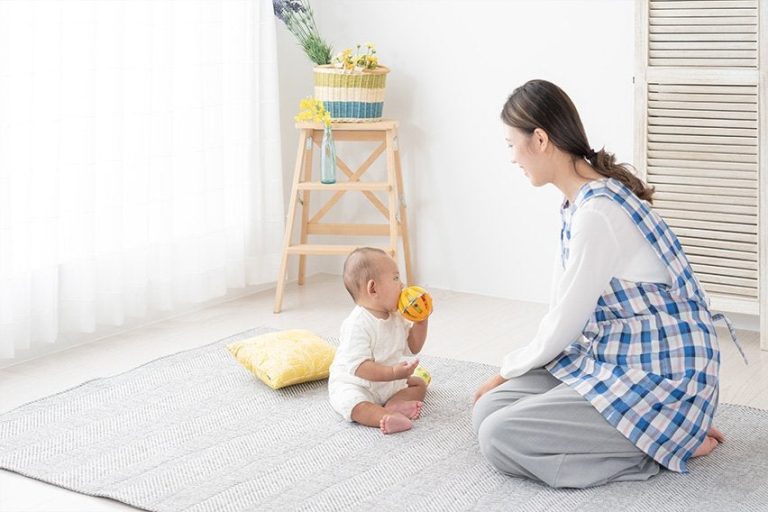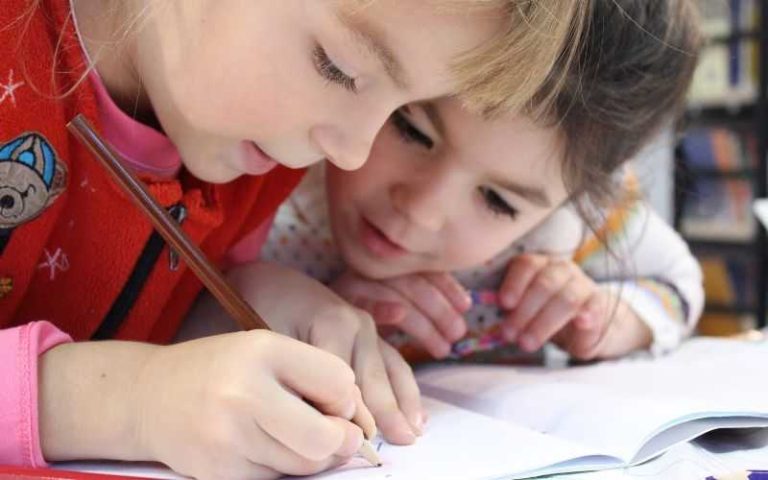Things That Start With I for Preschool
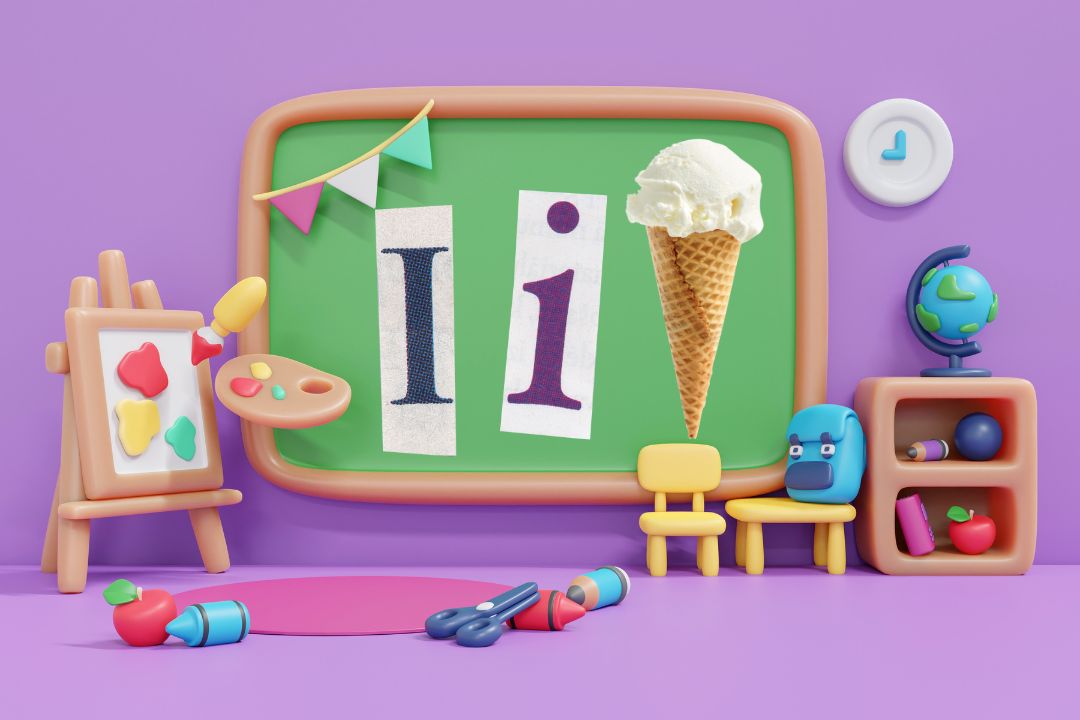
Ice cream and iguana are two things that start with I which can engage preschool children in a fun and educational way. Introducing preschoolers to the wonders of the alphabet is an essential step in their early learning journey.
It helps develop their language skills and expands their knowledge of the world around them. When it comes to the letter I, there are several interesting things that start with this letter and can captivate the attention of preschoolers. From the delightful treat of ice cream to the fascinating reptile, the iguana, these objects can spark curiosity, and imagination, and provide a platform for interactive learning.
This article will explore various things that start with I, highlighting their significance in preschool education and sharing engaging activities to reinforce letter recognition and phonics skills. So let’s embark on an exciting journey of discovery with the letter I!
Interactive Learning With ‘I’
Interactive learning plays a crucial role in preschool education, especially when it comes to teaching children about the letter ‘I’. Incorporating interactive methods not only makes learning fun but also enhances children’s cognitive development. In this article, we will explore the importance of letter-specific learning, as well as how to engage preschool children through interactive approaches.
Importance Of Letter-specific Learning
Letter-specific learning is the foundation for developing strong literacy skills in preschool children. By focusing on the letter ‘I’, we can create a comprehensive learning experience that hones in on its sound, recognition, and formation. This targeted approach not only provides a solid understanding of the letter ‘I’, but also serves as a stepping stone for future language development.
Here are some key benefits of letter-specific learning for preschoolers:
- Phonemic awareness: Learning the sound associated with the letter ‘I’ helps children differentiate it from other sounds, building their phonemic awareness skills. This knowledge is crucial for reading and spelling.
- Letter recognition: Interactive activities that involve identifying and matching the letter ‘I’ in various contexts strengthen children’s ability to recognize it in print, whether uppercase or lowercase.
- Letter formation: Through interactive methods like tracing, children develop fine motor skills while learning how to correctly write the letter ‘I’.
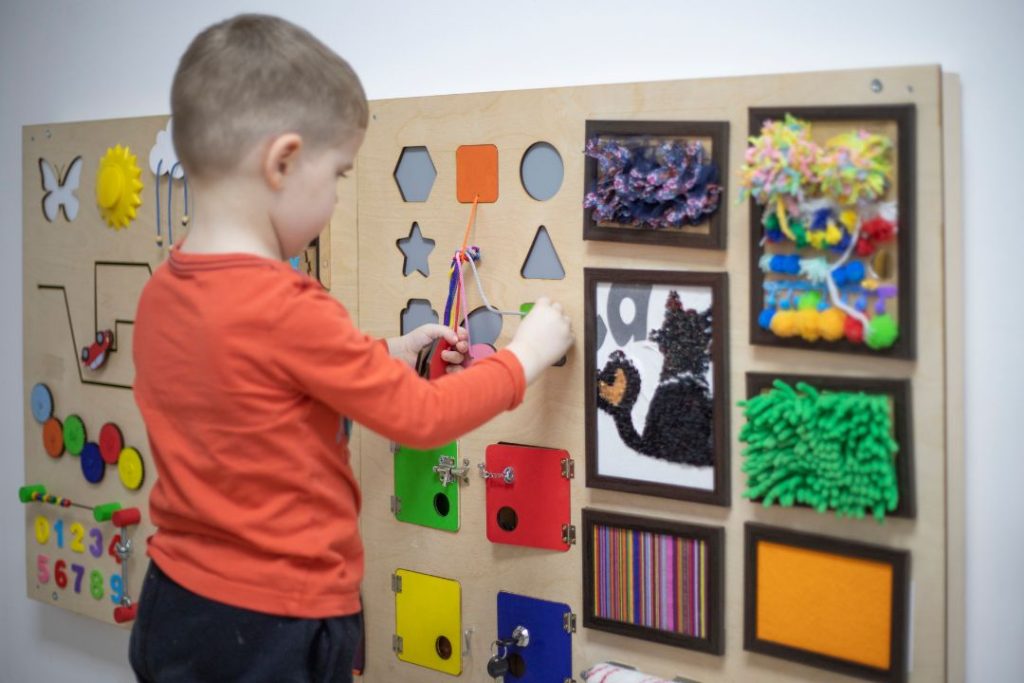
Engaging Preschool Children With Interactive Methods
When it comes to teaching preschool children, engagement is key. Interactive methods not only capture children’s attention but also encourage active participation, making learning enjoyable for them. Here are some effective ways to engage preschoolers with interactive learning of the letter ‘I’:
- Sensory activities: Incorporate sensory play into the learning process to make it more engaging for preschoolers. For example, you can create an ‘I’ sensory bin by filling it with items such as ice, igloos, and insects. Encourage children to explore and discuss these items, reinforcing the letter ‘I’ in a hands-on manner.
- Interactive games: Use interactive games, such as matching cards with words starting with ‘I’ or sorting objects into categories. This gamified approach creates a fun learning environment and helps children consolidate their understanding of the letter ‘I’.
- Songs and rhymes: Incorporate catchy songs and rhymes that feature words beginning with ‘I’. Singing along and doing actions related to the words not only improves phonemic awareness but also reinforces the letter ‘I’ in a memorable way.
- Art and crafts: Engage children in craft activities that allow them to create letter ‘I’ art. For example, they can use colored paper, paints, and glue to make igloos, insects, or ice-related artwork. This hands-on approach helps reinforce the shape and sound of the letter ‘I’ while promoting creativity.
The Role Of Interactivity In Cognitive Development
Interactivity plays a significant role in preschoolers’ cognitive development. By engaging children through interactive learning experiences centered around the letter ‘I’, we can enhance their cognitive abilities in various ways:
- Attention and focus: Interactive activities grab children’s attention, encouraging them to stay engaged and focused on the learning task at hand. This helps improve their attention span and concentration skills.
- Memory retention: Interactive methods, such as games and songs, make learning memorable, leading to better retention of information. When children actively participate in the learning process, they are more likely to remember what they have learned.
- Problem-solving skills: Interactive learning often involves problem-solving elements, such as finding the missing ‘I’ letter in a word or completing a puzzle. These activities help develop critical thinking and problem-solving skills in preschoolers.
- Language development: By immersing children in interactive experiences focused on the letter ‘I’, their vocabulary expands, and they gain a deeper understanding of how words are formed and used.
Overall, interactive learning is a powerful tool for teaching preschool children about the letter ‘I’. By incorporating letter-specific activities, engaging methods, and interactive experiences, we can foster their cognitive development, laying a strong foundation for future learning.
Ideal Ideas Starting With ‘I’
Preschool is a crucial time for children as they embark on their learning journey. It is during this period that children develop foundational skills that will set the stage for their future academic successes. As educators and parents, it is important to provide children with engaging and interactive experiences that enhance their learning in a fun and stimulating way. Here, we present some ideal ideas starting with ‘I’ that will captivate preschoolers and support their developmental growth.
Imaginative Play For Foundational Skills Enhancement
Imaginative play is a vital component of a preschooler’s learning experience. It encourages creativity, problem-solving, and social interaction. Here are a few ways to incorporate imaginative play into the curriculum:
- Set up a dramatic play area with different themes like a doctor’s office, a post office, or a grocery store. This allows children to explore various roles and scenarios, fostering their imagination and communication skills.
- Provide open-ended materials such as blocks, dolls, or dress-up clothes, enabling children to create their own stories and explore different possibilities.
- Arrange sensory play stations like sand or water tables, allowing children to engage in hands-on activities that enhance their fine motor skills and sensory development.
Interactive Storytelling Sessions
Storytelling is a powerful tool for capturing a child’s attention and fostering language development. Incorporating interactive elements into storytelling not only makes it more engaging but also enhances a child’s cognitive and social-emotional skills. Here’s how to make storytelling sessions interactive:
- Encourage children to actively participate in the story by asking questions, predicting outcomes, or retelling parts of the story.
- Use props and visual aids, such as puppets or felt boards, to bring the story to life and make it more interactive.
- Create a cozy and inviting atmosphere with cushions, rugs, and soft lighting, to make storytelling sessions a special and comfortable experience for children.
Incorporating Technology In ‘i’ Based Learning
Technology can be a valuable tool in preschool education when used appropriately and in moderation. Integrating technology with ‘I’ based learning can make the learning process more engaging and interactive. Here are a few ways to incorporate technology:
- Utilize interactive educational apps and websites that focus on skills such as counting, letter recognition, and problem-solving.
- Introduce educational games and puzzles that promote critical thinking and logical reasoning.
- Use age-appropriate tablets or laptops to provide children with hands-on experiences, allowing them to explore various educational resources and interactive lessons.
Imaginative Activities For Preschoolers
Engaging preschoolers in imaginative activities is a wonderful way to foster their creativity and cognitive development. By encouraging them to explore their imagination, we can help expand their problem-solving skills, boost their confidence, and enhance their overall development. In this blog post, we will explore three key areas of imaginative activities for preschoolers: craft projects that ignite creativity, imaginative games to encourage problem-solving, and interactive theatre performances for kids.

Craft Projects That Ignite Creativity
Craft projects are a great way to let children unleash their creativity. Preschoolers love getting their hands dirty and exploring different textures, colors, and shapes. Here are a few craft project ideas that can ignite their imagination:
- Create an ocean-themed collage using various materials such as paper, ribbons, and beads. Encourage children to think about different sea creatures and their habitats as they create their underwater masterpieces.
- Build a cityscape using recycled materials like cardboard boxes, paper rolls, and bottle caps. Let their imagination run wild as they construct buildings, roads, and cars from everyday objects.
- Design and decorate their own superhero cape or princess crown. Provide them with fabric, glitter, feathers, and other decorative elements to personalize their accessory. This activity not only encourages creativity but also helps children feel empowered and confident.
Imaginative Games To Encourage Problem-solving
Games provide an excellent platform for preschoolers to use their imagination while enhancing their problem-solving skills. Here are a few imaginative games to engage and challenge your little ones:
- Treasure Hunt: Hide objects or clues around the house or in the backyard, and let the kids embark on a treasure-hunting adventure. Encourage them to use their problem-solving skills to decipher the clues and find the hidden treasures.
- Pretend Play: Set up a pretend play area with different costumes and props. Let the children take on various roles and act out different scenarios. This not only sparks their imagination but also nurtures their social and emotional development.
- Building Blocks Challenge: Provide children with building blocks of different shapes and sizes. Encourage them to build imaginative structures such as castles, towers, or bridges. This activity promotes critical thinking, spatial awareness, and problem-solving skills.
Interactive Theatre Performances For Kids
Watching a live theatre performance can be a truly magical experience for preschoolers. It transports them to a world of imagination, captivating their attention and stimulating their minds. Here are a few interactive theatre performances that your little ones will absolutely love:
| Theatre Performance | Description |
|---|---|
| The Enchanted Forest Adventure | A mesmerizing play that takes children on a journey through an enchanted forest, where they meet talking animals, fairies, and discover hidden treasures. |
| The Circus Extravaganza | A dazzling performance that introduces children to the colorful world of circus. They will be amazed by acrobats, clowns, and other circus acts. |
| The Superhero Adventure | An action-packed show where children join forces with their favorite superheroes to save the day and defeat the villains. |
These interactive theatre performances not only entertain children but also encourage active participation, sparking their imagination and fostering their love for the arts.
Interactive Exercises With ‘i’
Engaging preschoolers in the learning process is crucial for their overall development. When it comes to teaching them about the letter ‘I’, incorporating interactive exercises can make the learning experience more enjoyable and effective. In this blog post, we will explore various interactive exercises with ‘I’ that will engage preschoolers and help them grasp the concept while having fun.
I Scavenger Hunts To Make Learning Playful
Scavenger hunts are a fantastic way to make learning interactive and playful for preschoolers. By organizing ‘I’ scavenger hunts, children not only learn about words that start with ‘I’, but also enhance their observation and problem-solving skills. Here’s how you can create an exciting ‘I’ scavenger hunt:
- Prepare a list of ‘I’ items or objects to be found, such as an ice cream cone, an igloo, an insect, or an iron.
- Hide these items around the designated area.
- Provide each child with a checklist or a simple sheet of paper with spaces to write or draw the items they find.
- Guide the children throughout the hunt, stimulating their curiosity and encouraging them to engage with objects that start with ‘I’.
- Once the scavenger hunt is complete, gather together to discuss the items and reinforce their association with the letter ‘I’.
Interactive Puzzles And Riddles With ‘i’ Words
Puzzles and riddles are wonderful tools to boost critical thinking and problem-solving skills in preschoolers. Adding a touch of interaction with ‘I’ words can make these activities even more engaging. Here are some ideas for incorporating interactive puzzles and riddles:
- Prepare a jigsaw puzzle featuring an image of an iguana, an island, or an ice cream truck, emphasizing the presence of ‘I’ words.
- Create riddles using ‘I’ words and encourage children to solve them. For example, “I am shiny and provide light at night. What am I?” (Answer: “Ice”).
- Offer simple crossword puzzles with ‘I’ words as clues and blank spaces for answers, encouraging children to fill in the missing letters to complete the words.
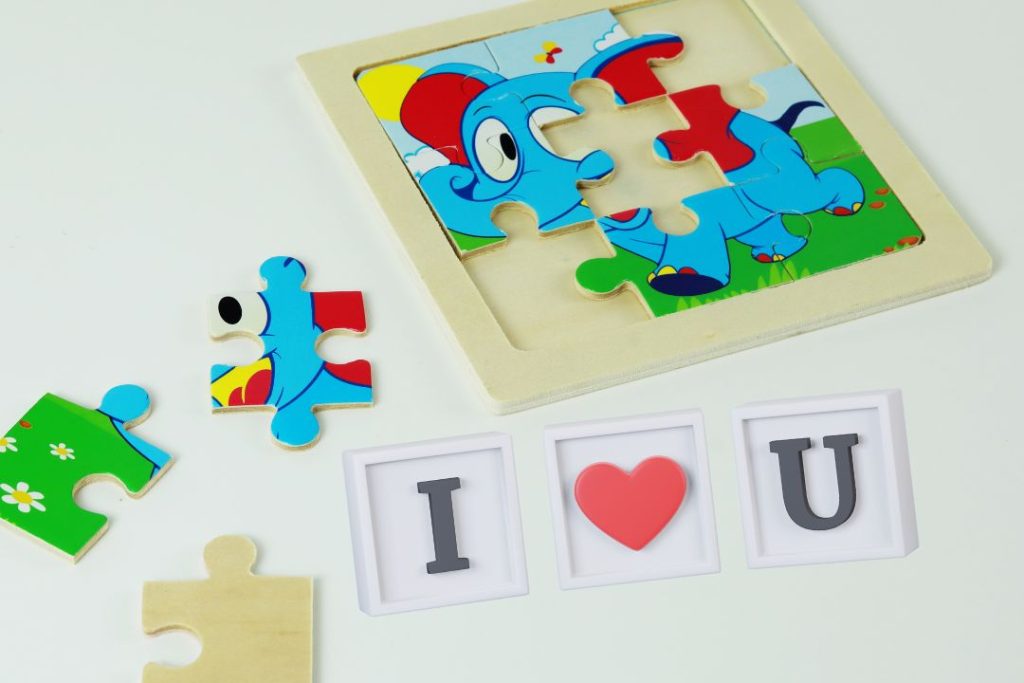
Music And Movement Games Featuring The ‘i’ Sound
Music and movement are excellent ways to ignite preschoolers’ enthusiasm and enhance their memorization skills. By incorporating games that feature the ‘I’ sound, children can learn about words that make this sound. Here are a few ideas:
- Play a game of “Musical Instruments” where children move around the room to the sound of different instruments starting with the letter ‘I’, such as an Indian flute or an Irish drum.
- Introduce a dance routine where children imitate various animals starting with the letter ‘I’, like an inchworm or an ibis.
- Organize a game called “Follow the I-Sound,” where children take turns making different ‘I’ sounds and others have to imitate them or identify words that contain that sound.
‘I’ Through Sensory Play
Discover the exciting world of sensory play with “I’ Through Sensory Play”! This preschool-focused resource introduces little ones to things that start with the letter I, engaging their senses for a fun and educational experience.
Creating ‘I’ Sensory Bins For Explorative Learning
Sensory play is a fantastic way to engage preschoolers in interactive and hands-on learning experiences. By incorporating sensory bins into their playtime, you can help children explore the letter ‘I’ and its associated words in a fun and immersive way. Creating ‘I’ sensory bins is simple and cost-effective, allowing you to provide hours of explorative learning for your little ones.
To start, gather a variety of items that begin with the letter ‘I’. Think of objects like insects, ice cubes, igloo-shaped blocks, and small toy animals such as iguanas or impalas. These items will not only introduce the letter ‘I’ but also encourage sensory exploration through touch, sight, and sound.
Here’s a breakdown of how to create an ‘I’ sensory bin:
- Choose a container: Select a plastic or wooden container with high sides to prevent any mess while allowing ample space for exploration.
- Add a base material: Fill the container with a sensory base material such as rice, sand, or water beads. This adds texture and further enhances the tactile experience.
- Introduce the ‘I’ items: Carefully place the various ‘I’ items into the bin, ensuring they are dispersed evenly throughout the base material. Encourage your little ones to touch, sort, and identify each object.
- Enhance the sensory experience: Consider incorporating additional sensory elements like scented items or different textures to further engage your child’s senses.
- Facilitate open-ended play: Let your child freely explore the sensory bin, allowing their curiosity to guide their play. Encourage them to name the objects they find, describe their attributes, and use their imagination to create stories or scenarios.

Ice Experiments To Combine Fun And Education
Ice, with its cold and slippery nature, can be an exciting element to introduce concepts related to the letter ‘I’. By conducting ice experiments, preschoolers can simultaneously learn about the properties of ice and develop important scientific skills. Here are a few ice experiments that merge fun with education:
- Ice excavation: Freeze small plastic toys or items inside ice cubes. Provide your child with tools such as droppers, salt, or warm water to excavate the objects from the ice. This activity not only teaches patience but also introduces concepts of melting and freezing.
- Ice painting: Fill an ice cube tray with water and add a few drops of food coloring to each section. Insert popsicle sticks into the cubes and freeze them. Your child can then use these colorful ice cubes as paintbrushes to create vibrant artwork on paper or cardboard.
- Ice and salt experiment: Fill two identical cups with water and place an ice cube in each. Sprinkle salt on one ice cube and observe the speed of melting compared to the unsalted cube. This experiment demonstrates how salt affects the freezing point of water.
- Ice cube melting race: Fill multiple cups with water and place an ice cube in each. Let your child decide where to place each cup, testing whether the ice cubes melt faster in direct sunlight or shaded areas. This activity encourages critical thinking and understanding of temperature changes.
Interactive Touch And Feel Boards With ‘i’ Textures
Engaging multiple senses simultaneously can greatly enhance a child’s learning experience. Interactive touch and feel boards with ‘I’ textures provide an opportunity for preschoolers to not only see and touch different objects but also explore their unique textures. Here’s how to create one:
- Gather materials: Find a sturdy board or piece of cardboard to serve as the base for your touch-and-feel board. Collect various objects or materials that begin with the letter ‘I’ and have distinct textures. Think of items like a rough sponge, a soft piece of fabric, or bumpy sandpaper.
- Create sections: Divide the board into sections using dividers or by drawing lines, assigning each section to a specific object or material.
- Attach the textures: Securely attach each object or material to its designated section of the board, ensuring they are firmly fixed in place.
- Encourage exploration: Invite your child to touch and feel each texture while asking questions like “What does this feel like?” or “Can you think of other objects that have a similar texture?” This interactive activity not only focuses on the sense of touch but also encourages vocabulary expansion and critical thinking.
By incorporating ‘I’ through sensory play, preschoolers can immerse themselves in an interactive learning experience. Whether it’s exploring the ‘I’ items in sensory bins, conducting ice experiments, or engaging with touch and feel boards, these activities provide a fun and educational way for young children to discover the wonders of the letter ‘I’.
Ideal Ideas: Engaging ‘I’ Sounds
Introducing the letter ‘I’ to preschoolers is an exciting opportunity for language and phonics development. What better way to make learning fun than with engaging activities that focus on the ‘I’ sound? In this blog post, we will explore several ideal ideas to help preschoolers master the sound of ‘I’. From making instruments to interactive phonics games and catchy songs, these activities will captivate their attention and enhance their language skills.
Making Instruments To Explore ‘i’ Sounds
One of the most enthralling ways to introduce the ‘I’ sound to preschoolers is by making instruments that produce ‘I’ sounds. This hands-on activity not only engages their creativity but also helps them associate the sound with concrete objects. Here are some simple instruments you can create together:
| Instrument | Suggested Materials |
|---|---|
| Drum | Empty containers, balloons, rubber bands |
| Shakers | Empty plastic bottles, dried beans or rice |
| Clickers | Popsicle sticks, bottle caps, glue |
Encourage children to use these instruments while practicing words that start with the ‘I’ sound. For example, they can beat the drum softly when saying “insect” or shake the shaker vigorously when saying “iguana”. This interactive experience not only reinforces the ‘I’ sound but also enhances their motor skills.
Interactive Phonics Games Focusing On ‘I’
To further reinforce the ‘I’ sound, introduce interactive phonics games that are both educational and enjoyable. These games provide an opportunity for preschoolers to actively participate and identify words with the ‘I’ sound. Here are a few game ideas to get you started:
- I Spy: Play the classic game of “I Spy” and ask children to find objects that start with the ‘I’ sound. For example, “I spy with my little eye something that starts with the sound ‘I’.” This game sharpens their listening skills and phonemic awareness.
- Sort the Sounds: Prepare picture cards with objects that either start with the ‘I’ sound or other sounds. Ask children to sort the cards into the correct categories. This game hones their ability to distinguish between different sounds.
- Puppet Show: Use puppets to act out words that start with the ‘I’ sound. Encourage children to identify the words and mimic the sounds. This game promotes imaginative play and language development.
‘I’ Sound Songs And Chants For Language Development
To make language development even more memorable, incorporate catchy ‘I’ sound songs and chants into your preschooler’s daily routine. These rhythmic tunes not only make learning fun but also help reinforce the ‘I’ sound in a playful way. Here are some song and chant suggestions:
- “Iggy the Iguana” chant: Repeat the chant, “Iggy the Iguana loves to say ‘I’. His sound is important, oh my, oh my!” Encourage preschoolers to mimic the ‘I’ sound with enthusiasm.
- “Incredible ‘I'” song: Sing a song about words that start with the ‘I’ sound, such as “insect”, “ice cream” and “Igloo”. Include rhythmic beats or hand movements to make it more engaging.
- “Letter ‘I’ Alphabet Song”: Introduce a song that focuses on the letter ‘I’ and its associated sound. Sing it regularly to reinforce your preschooler’s phonics understanding.
By immersing preschoolers in the world of ‘I’ sounds through instrument-making, interactive phonics games, and catchy songs, you can ensure their language development journey is both enjoyable and effective. Incorporate these ‘I’ sound activities into your preschool curriculum and watch as your little ones become confident phonetic explorers.
Artistic Expression With ‘I’
Artistic expression is a wonderful way to allow preschoolers to explore their imagination and creativity. When it comes to learning the letter ‘I’ in preschool, incorporating art activities can make the experience even more engaging and memorable. Through drawing, painting, interactive art galleries, and imaginative role-playing, preschoolers can dive into the world of ‘I’ while having fun and expressing themselves.
Introducing ‘i’ Through Drawing And Painting
One of the best ways to introduce the letter ‘I’ to preschoolers is through drawing and painting. This hands-on activity not only enhances their fine motor skills but also encourages their artistic expression. Provide children with large sheets of paper, crayons, and paints, and let their imagination run wild. Encourage them to draw and paint things that start with ‘I’ such as ice cream cones, igloos, insects, and more. By engaging in this artistic activity, preschoolers can reinforce their understanding of the letter ‘I’ while enjoying the process of creating beautiful artwork.
Interactive Art Galleries In The Classroom
Bringing an interactive art gallery experience into the classroom can be an exciting way to immerse preschoolers in the world of ‘I’. Create a mini art gallery in the classroom featuring various artworks starting with ‘I’. Display colorful paintings of landscapes, animals, and objects that start with ‘I’, and encourage children to observe, discuss, and appreciate the artwork. Additionally, provide interactive elements such as touch-and-feel stations, where children can explore different textures related to the displayed artworks. This hands-on approach not only sparks their curiosity but also helps them associate the letter ‘I’ with the art they are experiencing.
Imaginative Role-playing With Costumes And Props
Role-playing is a fantastic way to ignite preschoolers’ imagination and cognitive abilities. Transform your classroom into a world of ‘I’ by incorporating imaginative play with costumes and props. Set up a dress-up corner with various costumes and props representing different things that start with ‘I’, such as a firefighter’s hat, a doctor’s coat, or a chef’s apron. Encourage the children to use their creativity and take on different roles and scenarios using these props. This interactive and imaginative activity not only helps preschoolers reinforce their understanding of ‘I’ but also enhances their social skills and cooperation as they play and interact with others.
In conclusion, artistic expression plays a vital role in helping preschoolers solidify their understanding of the letter ‘I’. By incorporating drawing, painting, interactive art galleries, and imaginative role-playing, educators can create a rich learning experience for children. These activities not only enhance their fine motor skills, but also encourage creativity, imagination, and exploration. So let’s immerse preschoolers in the world of ‘I’ through artistic expression and watch as they blossom into little artists.
‘I’ Inspired Digital Interaction
Engaging preschoolers in a learning environment that sparks their curiosity can be a rewarding experience. One way to captivate their attention and make learning fun is through ‘I’ inspired digital interaction. Using interactive apps, online books, and digital drawing tools, children can explore the letter ‘I’ in a playful and educational manner. Let’s discover some exciting ways to introduce preschoolers to the world of technology while expanding their knowledge of words that start with ‘I’.
Interactive Apps That Focus On The ‘I’ Letter
Interactive apps provide a hands-on approach to learning and allow preschoolers to explore the ‘I’ letter in various contexts. Let them immerse themselves in adventure-filled games, where they can uncover hidden objects, solve puzzles, and even engage with ‘I’ characters in dynamic storytelling. These apps offer a blend of entertainment and education, helping children associate the letter ‘I’ with positive experiences. Some popular interactive apps to consider for your preschooler include:
- Island Adventure: Join Izzy the explorer on an interactive journey to a mystical island filled with intriguing animals and treasures.
- Ice Cream Factory: Unleash your little one’s creativity as they design their own ice cream flavors while learning about colors and flavors that start with ‘I’.
- Insect Explorer: Embark on a virtual bug hunt with Isaac the bug detective. Learn fascinating facts about insects and uncover their hidden habitats.
Online Interactive Books Featuring ‘I’ Characters
Stories have the power to captivate young minds and foster a love for reading. Online interactive books take storytelling to the next level, combining captivating visuals, engaging narratives, and interactive elements. These books come alive with ‘I’ characters, allowing preschoolers to actively participate and explore new concepts. Some online interactive books featuring ‘I’ characters that your child may enjoy include:
- Inky’s Incredible Adventure: Join Inky the energetic iguana on a thrilling quest to save his friends from a mischievous magician.
- Isabella’s Imaginary Island: Enter Isabella’s vivid imagination as she embarks on a whimsical journey to an imaginary island, encountering imaginative creatures along the way.
- Ice Skating with Ivan: Glide across frozen landscapes with Ivan the penguin as he learns about the joy of friendship and the importance of perseverance.
Getting Creative With Digital Drawing Tools
Digital drawing tools offer a unique platform to unleash your preschooler’s creativity and introduce them to the world of art. With these tools, children can experiment with colors, shapes, and textures to create their own ‘I’ inspired masterpieces. Encourage your little artist to draw their favorite ‘I’ characters or objects, such as igloos, ice cream cones, or even invent their very own imaginary creature starting with ‘I’. Some popular digital drawing tools for preschoolers include:
| Name | Description |
|---|---|
| DrawItKids | A user-friendly drawing app with a variety of brushes and colors to spark imagination and creativity. |
| PaintTime | An interactive painting software tailored for young children, providing simple tools and unlimited artistic possibilities. |
| InkSplash Studio | A digital canvas for preschoolers to explore their artistic potential, complete with easy-to-use tools and engaging effects. |
By engaging preschoolers in ‘I’ inspired digital interaction, we can ignite their curiosity and make their learning journey an exciting one. Interactive apps, online books, and digital drawing tools all play crucial roles in stimulating their imagination, enhancing their vocabulary, and developing their love for technology.
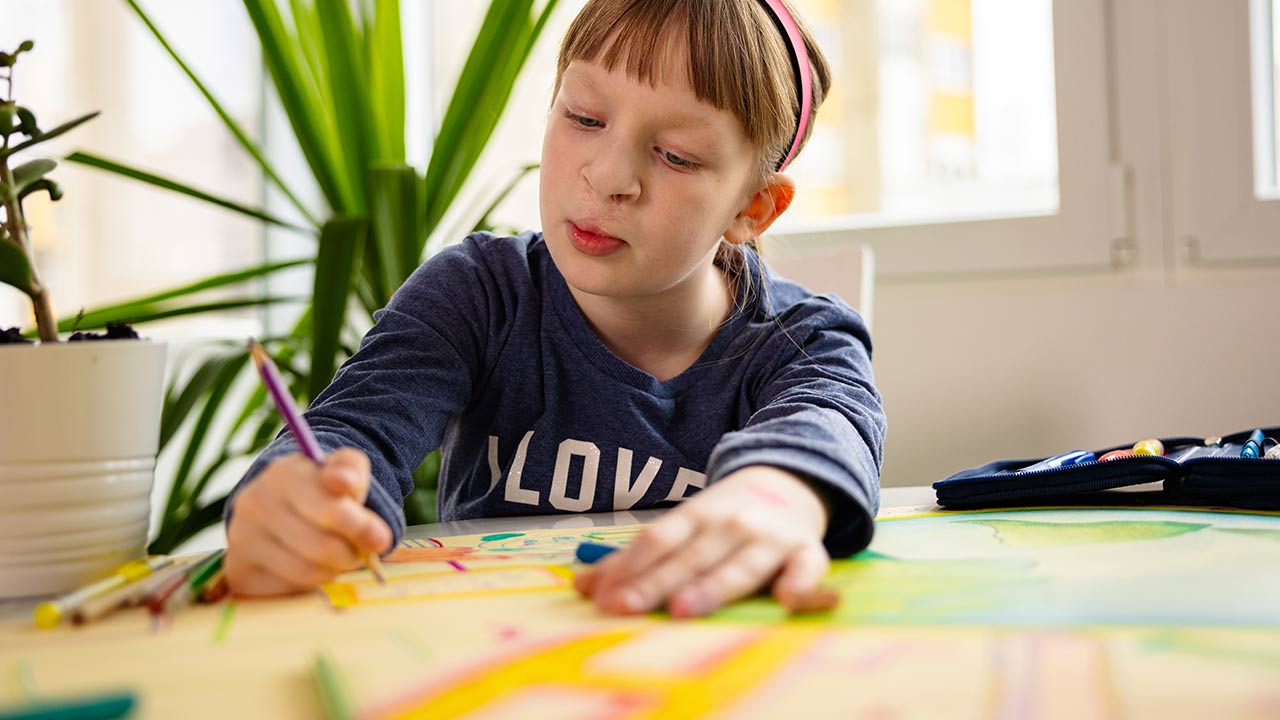
Credit: raisingchildren.net.au
Frequently Asked Questions For Things That Start With I For Preschool
What Starts With The Letter I For Preschoolers?
Items that start with the letter “I” for preschoolers include ice cream, iguana, and igloo.
What Are Short I Words For Preschoolers?
Short I words for preschoolers include fish, pig, sit, six, lid, and ship. These words are easy for young children to pronounce and understand.
What Is An I Word For Pre-K?
An I word for pre-K is “insects. ” Introducing kids to insects can help develop their curiosity and understanding of the natural world.
What Word For Children Starts With I?
The word for children that starts with I is “infant. “
Conclusion
Regardless of the vast world we find ourselves in, there are plenty of meaningful and exciting things that start with the letter “I” for preschoolers to explore. From inspiring insects to incredible ice cream and imaginative instruments, the possibilities for educational and entertaining activities are endless.
By incorporating these “I” words into their daily learning routine, children can expand their vocabulary, enhance their cognitive skills, and develop a love for learning. Encourage their curiosity and watch their knowledge grow as they discover the wonders of the letter “I”!

Emily specializes in integrating arts into early childhood education. She believes in fostering creativity and imagination through music, art, and drama activities.

